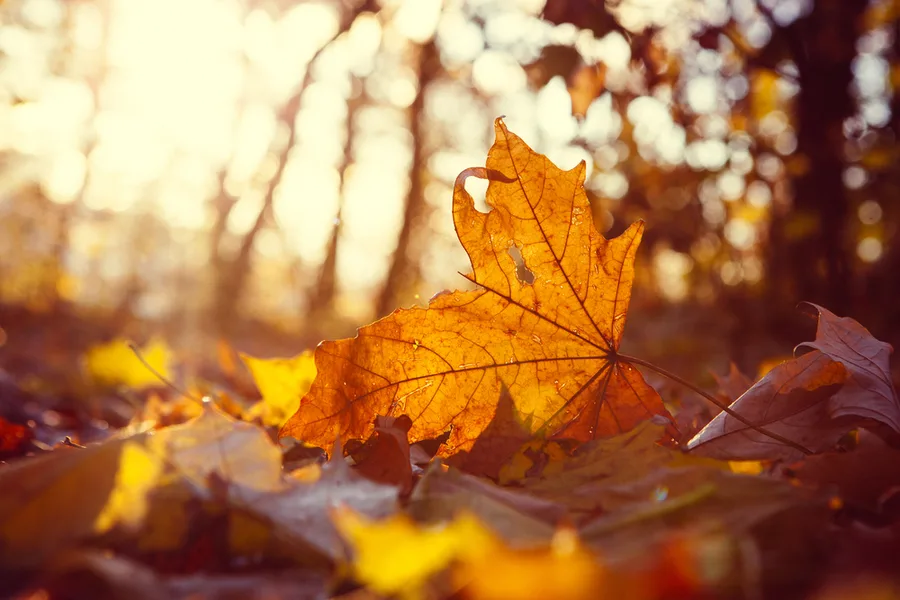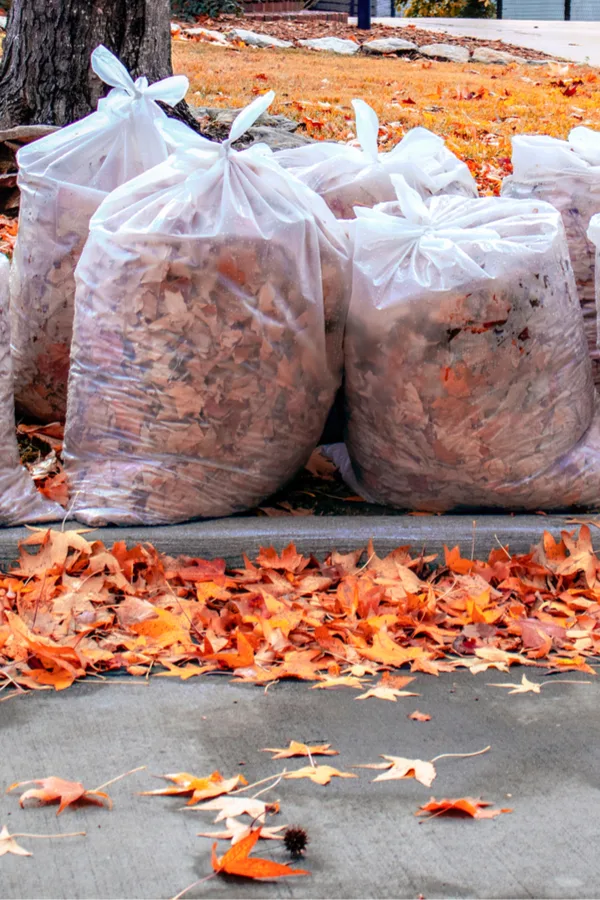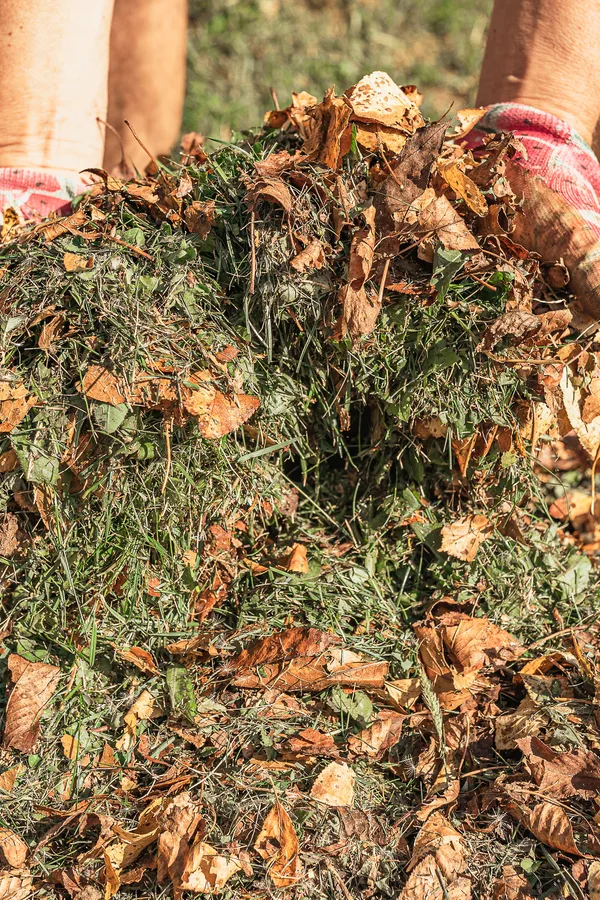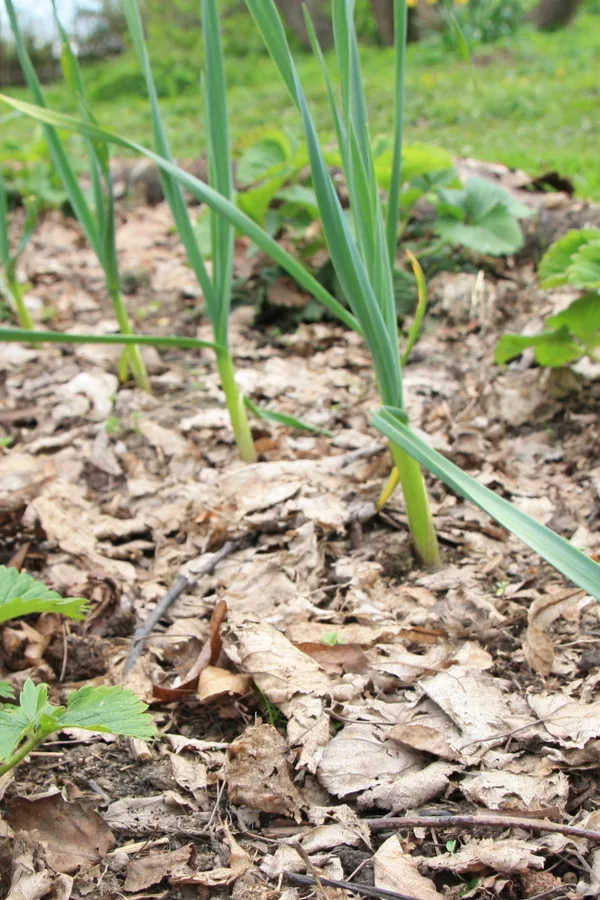Autumn has arrived, and that means it’s time to start raking up and collecting all of those falling leaves – and even better – finding some great ways to use those leaves to power and protect the plants and soil in your garden, flowerbeds and more.
Falling leaves may be a bit of a nuisance to some, but they are truly a gift from nature. Not only do they light up the autumn landscape with brilliant fall colors, they also happen to be one of the most inexpensive ways to add tons of organic magic to your soil, and protect plants from winter, weeds and more.
And when we say inexpensive, we mean inexpensive! After all, leaves are completely free for the taking. And even if you aren’t blessed with trees in your own yard, it’s not hard to find others who are.

When we started our little farm eleven years ago, there wasn’t a single tree to be found. But that didn’t stop us from finding leaves by the truckload to help build our soil and protect plants.
A simple drive around some of the wooded neighborhoods nearby usually resulted in more leaves than we could haul. Many times, they were even bagged and waiting on the curb for pickup.
And did we ever use them! And still do to this day. In fact, leaves are truly one of the best resources of all for mulching plants, creating great compost, and building better soil. With that in mind, here are 5 great ways you can use all of those falling leaves to power your landscape this fall.
5 Great Ways To Use Leaves
1. Build A Great Fall Compost Pile
Hands down, leaves are one of the best materials around to build the perfect fall compost pile! They break down quickly (when shredded first, and are filled with all kinds of plant-loving nutrients.
When it comes to composting, it is important to know that some leaves are better than others for your pile. Maple, birch, ash, beech and fruit tree leaves are fantastic to compost and use in the garden and landscape.
Oak leaves on the other hand should be composted in moderation. The leaves of oaks tend to be more acidic. Unfortunately, too many in a pile can result in compost that is less than ideal for most vegetable gardens.
A good rule of thumb is to use no more than 10 to 20% of oak leaves. This will help to keep a compost pile from becoming overly acidic.

Shred Those Leaves!
Like anything you put into a compost pile, leaves benefit greatly from being shredded first. Whole leaves won’t compost quickly if left alone on the ground or in a compost pile. Electric leaf shredders are great for this task!
If you don’t own a shredder, no worries. A regular old push mower or riding mower does a great job of shredding leaves. If you have a bagging attachment, even better!
We create a long pile and use our riding mower to shred them fast. In about 5 minutes, we can reduce a massive pile of into a couple wheelbarrow loads of shredded bits. For more on using those leaves to create a great compost pile, see How To Turn Leaves Into Compost – Faster Than Ever!
#2 Protecting Garden Plants
Leaves are excellent for protecting late season, overwintering and perennial garden crops. A few inches provide great insulation and weed protection for fall planted crops such as garlic and onions.
When using leaves for this purpose, it is best to leave them whole. This helps to keep the soil covered, suppressing existing weeds and blocking new weed seeds from finding bare soil. Leaving them whole also helps keep them from blowing away.
In addition, the whole leaves also keep the soil temperature more regulated from wild temperature swings. This can be huge for helping to keep roots safe under the soil.
#3 Protecting Perennials, Shrubs and Bushes
Whole leaves are also perfect for using around rose bushes, asparagus, strawberry plants, blueberry bushes and perennial flowers. All of these plants benefit greatly from a bit of protection from the constant freezing and thawing winter can bring.
Just as with garden crops, a covering of leaves helps to regulate the soil temperature for perennials. Even more, it also protects their roots from completely freezing out if the thermometer drops too low.
#4 Creating A Foliage Cover Crop In The Garden
If you didn’t get a chance to plant a cover crop in your garden this fall – you can cover it instead with a thick coat of leaves.
Just like a cover crop, a thick coating of leaves will keep your garden soil from being exposed to harsh winter rains, snow and wind. Without protection, winter’s fury can quickly whisk away the top layer of your soil. In the process, it leaves your soil with less nutrients for next year’s crops.

That coverage also helps to cut down on next year’s weeds by making it hard for blowing and drifting seeds to find a home. It is a win-win that is 100% free of charge!
#5 Storing Leaves For Spring
Finally, now is the time to shred some of those extra leaves and store them to use next spring at planting time. Each year in our garden, we like to use three basic forms of organic mulch – straw, compost and lots and lots of shredded leaves!
The compost / shredded leaf mix really helps to retain moisture for plants. It also breaks down quickly, making valuable nutrients available to the plants as it does. We use it both in our planting holes and also on top around the plants as a mulch.

In fact, we use so many leaves that a few years back, we built a “corn-crib” storage bin to keep a big supply on hand at all times. You can just as easily create a temporary bin with inexpensive chicken wire fence to store large reserves for your garden.
So what are you waiting for? Get out there and start collecting those leaves and power up your garden and landscape for free!
Jim and Mary Competti have been writing gardening, DIY and recipe articles and books for over 15 years from their 46 acre Ohio farm. The two are frequent speakers on all things gardening and love to travel in their spare time.
As always, feel free to email us at thefarm@owgarden.com with comments, questions, or to simply say hello! You can sign up for our free email list in the subscribe now box in the middle of this article. Follow us on Facebook here : OWG Facebook. This article may contain affiliate links.

